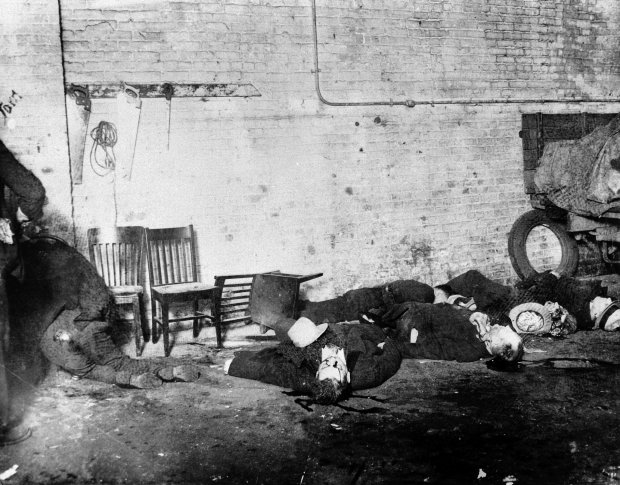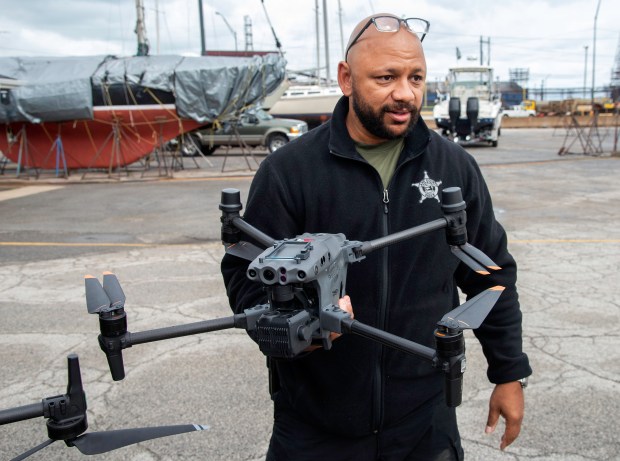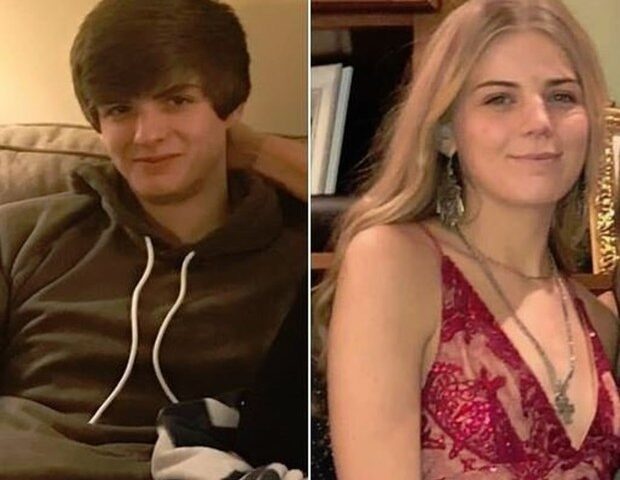Here’s a look back at what happened in the Chicago area on Feb. 14, according to the Tribune’s archives.
Is an important event missing from this date? Email us.
Weather records (from the National Weather Service, Chicago)
- High temperature: 62 degrees (1954)
- Low temperature: Minus 11 degrees (1905)
- Precipitation: 0.94 inches (1950)
- Snowfall: 8.3 inches (1990)
1920: The League of Women Voters was founded in Chicago; its first president was Maud Wood Park.
1929: Seven men, suspected to be members of George “Bugs” Moran’s gang, were lined up against the wall of a garage on Clark Street, the gang’s headquarters, and killed by rivals’ machine guns in what became known as the St. Valentine’s Day Massacre.
It became the most infamous of all gangland slayings in America, and it savagely achieved its purpose — the elimination of the last challenge to Al Capone for the mantle of crime boss in Chicago.
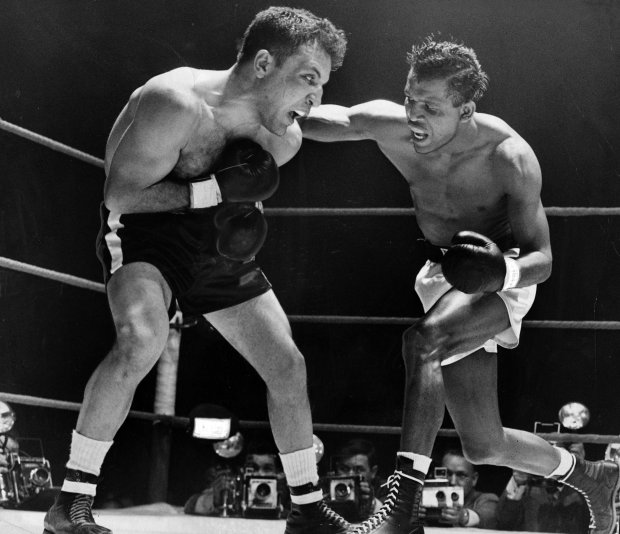
1951: “St. Valentine’s Day Massacre II.” Sugar Ray Robinson won the middleweight championship from “Raging Bull” Jake LaMotta on a 13th-round TKO at Chicago Stadium. LaMotta, who had never been knocked down, preserved that record.
LaMotta won only one of his six fights with Robinson and once observed, “I fought Sugar Ray so many times it’s a wonder I didn’t get diabetes.”
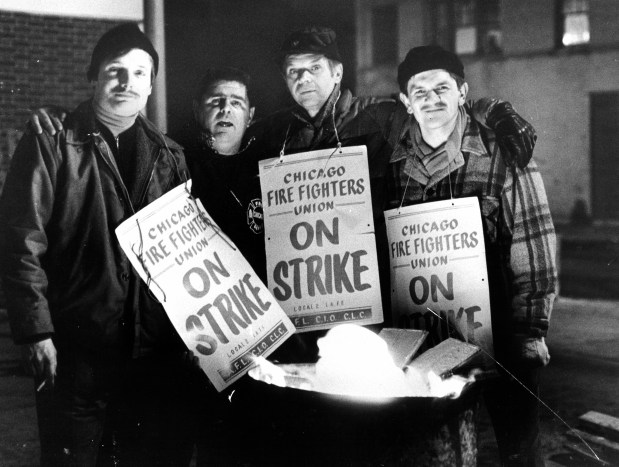
1980: City firefighters went on strike for the first and only time as the department’s first female recruit — Lauren Howard — began her career.
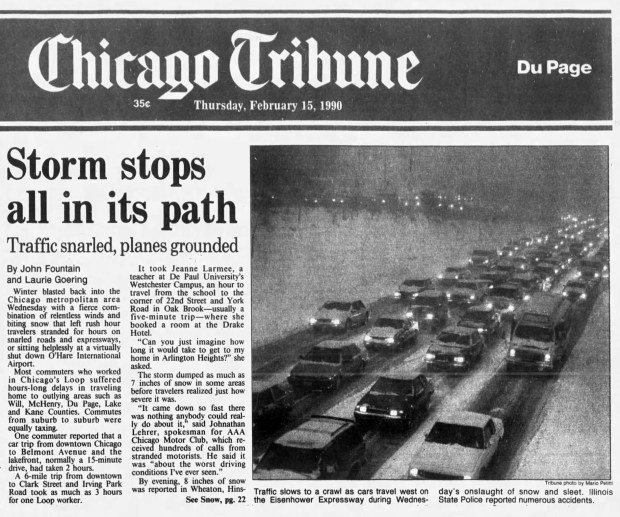
1990: Snow began falling in the early afternoon and quickly increased in intensity, with visibility dropping to near zero. It peaked during the evening commute as northeast winds reached more than 20 mph.
Normal one-hour commutes turned into ordeals lasting hours longer. O’Hare airport closed at 7:30 p.m. after a jet slid off a runway while attempting departure.
Mayor Richard M. Daley received criticism after the 10-inch snowfall was met with a slow response by the city’s snow removal crews.
“I don’t think this is going to cost me my job,” Daley said, adding, “I’m not going to run and hide. I’m the mayor of Chicago, and I accept responsibility.”
Vintage Chicago Tribune: Michael Jordan — 23 stories about No. 23
Also in 1990: Michael Jordan wore No. 12 after his No. 23 jersey was believed to be stolen. He scored 49 points in an overtime loss to the Orlando Magic.
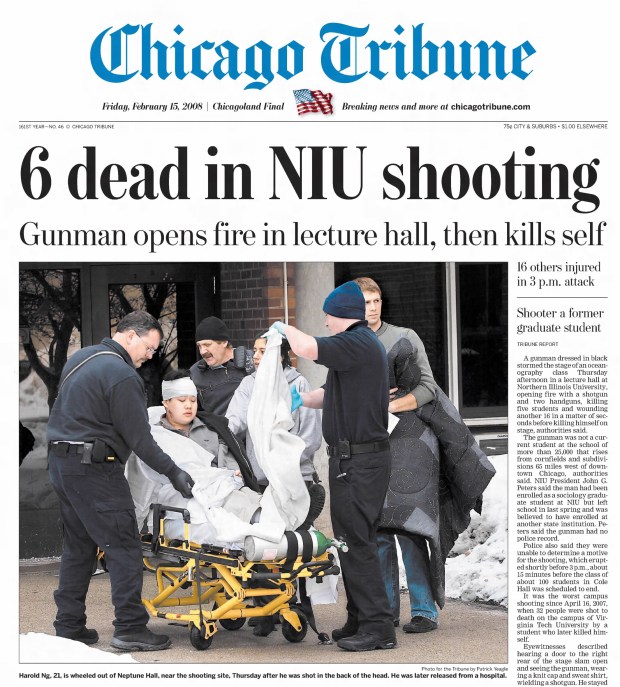
2008: A former student dressed in black walked onto the stage of a lecture hall at Northern Illinois University and opened fire on a packed class; Steven Kazmierczak killed five students before committing suicide.
Want more vintage Chicago?
Subscribe to the free Vintage Chicago Tribune newsletter, join our Chicagoland history Facebook group, stay current with Today in Chicago History and follow us on Instagram for more from Chicago’s past.
Have an idea for Vintage Chicago Tribune? Share it with Kori Rumore and Marianne Mather at krumore@chicagotribune.com and mmather@chicagotribune.com


